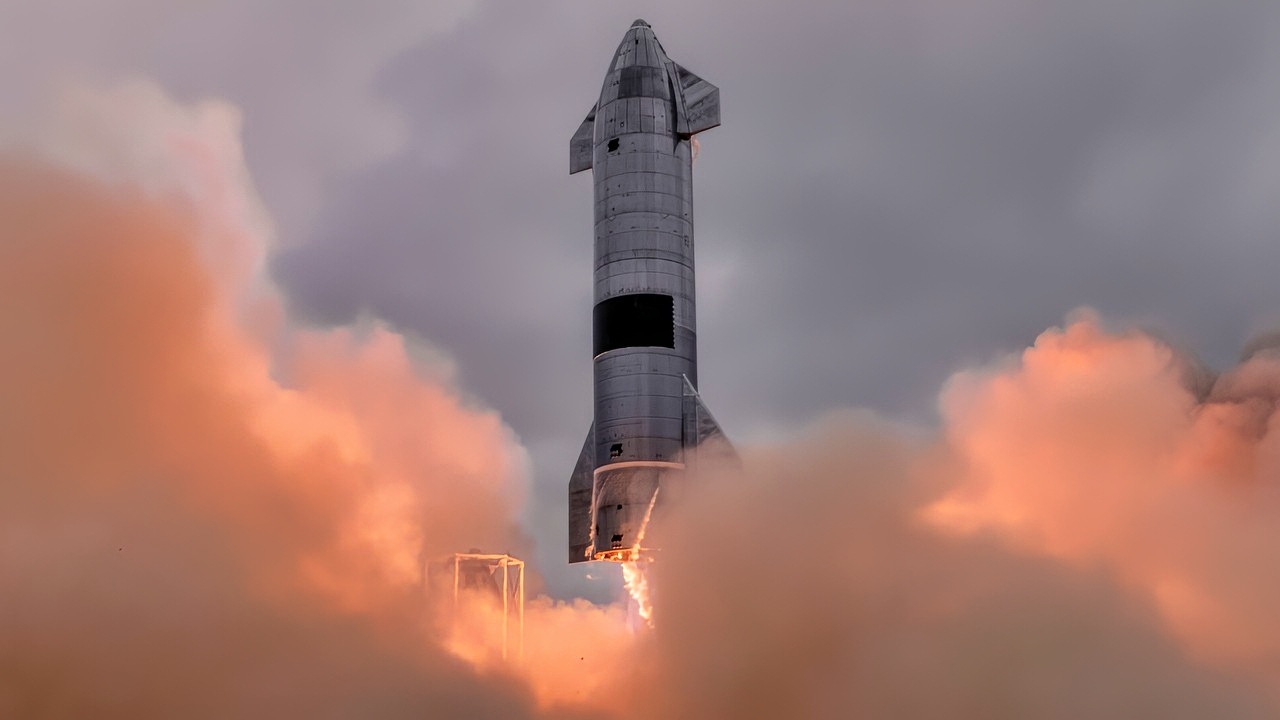Key Points and Summary – Following the landmark success of its 10th test flight, SpaceX successfully completed a 33-engine static fire of Super Heavy Booster 15-2 on September 7th.
-The test, a critical step toward the upcoming Flight 11, notably used a refurbished booster previously flown on Flight 8, highlighting the program’s push for reusability.
-With the upper stage, Ship 38, also progressing through tests, the 11th launch could occur as soon as late September.
-This rapid testing cadence is crucial as SpaceX works to certify Starship as the Human Landing System for NASA’s Artemis 3 moon mission.
SpaceX Fires Booster 15-2 Ahead of 11th Test Flight
Elon Musk’s SpaceX has reached another critical milestone in its bid to make Starship operational, carrying out a static fire of its next Super Heavy booster ahead of the program’s upcoming eleventh flight test.
On September 7, engineers at the company’s Starbase facility in Texas ignited all 33 Raptor engines on Booster 15-2 for around ten seconds, producing enormous plumes of flames and the characteristic roar that spectators have come to expect from SpaceX launches.
Video footage of the static fire was posted to SpaceX’s official social media channels.
The test marked the latest step toward the next launch, following the recent success of Starship Flight 10, which lifted off from Starbase on August 26 and, for the first time, achieved every major mission objective.
Rapid and Re-usable
Booster 15-2 is a reused prototype, with the “2” designation referring to its prior role in Flight 8, where it was successfully caught by the orbital launch tower. After being modified inside the Megabay hangar, the booster was moved to Pad A and mounted for Sunday’s firing.
Pre-flight static fire tests are designed to ensure the structural integrity of both stages.
The upper stage for the upcoming mission is expected to be Starship 38, which has already completed cryogenic pressure tests as of late July. The next milestone is expected to be a static fire of Ship 38, clearing the way for a full vehicle launch.
If the schedules remain as they are, and if regulatory approvals are confirmed, Flight 11 could launch as early as late September or early October.
The news comes hot off the back of Flight 10, a successful launch that has injected much-needed momentum into the program after a series of high-profile failures and crashes earlier this year. Flight 10 saw a clean hot-stage separation, as well as a safe and controlled splashdown of the Super Heavy Booster.
The successful test flight also saw the orbital insertion of Ship 37, and eventually its reentry and soft landing in the Indian Ocean.
Analysts and industry experts hailed the launch as a major breakthrough, following three consecutive launches that all ended in upper-stage explosions.
Flight 10’s results were a major public relations boost for SpaceX, too – essential for keeping the Starship on track for its most high-profile commitment yet: becoming the Human Landing System for NASA’s Artemis 3.
Per the contract, SpaceX is required to demonstrate Starship’s ability to refuel in orbit, land on the lunar surface uncrewed, and deliver astronauts to the moon in 2027.
About the Author:
Jack Buckby is a British author, counter-extremism researcher, and journalist based in New York who writes frequently for National Security Journal. Reporting on the U.K., Europe, and the U.S., he works to analyze and understand left-wing and right-wing radicalization, and reports on Western governments’ approaches to the pressing issues of today. His books and research papers explore these themes and propose pragmatic solutions to our increasingly polarized society. His latest book is The Truth Teller: RFK Jr. and the Case for a Post-Partisan Presidency.
More Military
Seawolf-Class: The Best Submarine Ever?
The Royal Navy Has a Destroyer Stuck in Port for 3,000 Days
America Is the King of Stealth Fighters
China’s J-20 Mighty Dragon Stealth Fighter Has Just 1 Mission










